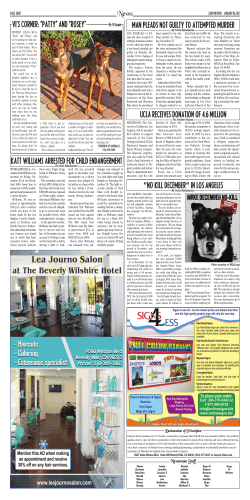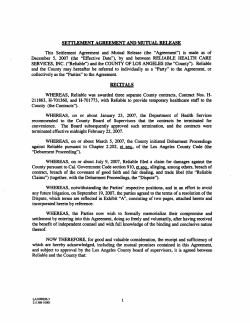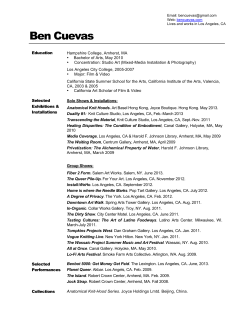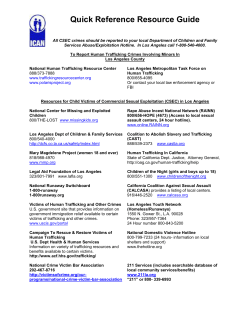
los angeles skid row
los angeles’ skid row The heart of Los Angeles’ Skid Row is comprised of roughly 50 city blocks (0.4 square miles) of the greater downtown area, generally east of the Downtown Historic Core and the high-rise district of Bunker Hill. It has been defined as being bounded by 3rd Street on the north, 7th Street on the south, Main Street on the west and Alameda Street on the east. Those boundaries have remained over the years because of the The History of Skid Row: The Skid Row that we see today entrenchment of the Little Tokyo community to the north and emerged sometime between the mid-1960’s and early 1970’s but the heavy industrial concentration lying further to the east. In the area itself dates to the 1870’s when the railroads were built recent years the homeless population within Skid Row has drifted west from Los Angeles Street toward the budding Loft District abutting Main Street, and south into the adjacent fashion and flower districts. Estimates of Skid Row’s population range from 8,000 to 11,000 people. It is a predominantly black male population, although over the recent years, the number of women and children has increased as well. About 20% of the population is veterans, and many suffer from substance abuse and/or mental illnesses. There are approximately 6,000 permanent residents in hotels and approximately 2,500 homeless individuals, with actual numbers varying by season and time of month. Approximately 2,000 to on the periphery of an emerging downtown. The largely agricultural fields east of downtown soon gave way to more industrial uses, which eventually attracted a primarily transient, male population that arrived by train, for employment by the railroads and related businesses, or to work in the predominantly transient agricultural sectors. From this environment arose the small hotels, transitional living spaces in their day that have become the single-room-occupancy residential hotels of today, and a service community geared to the needs of the workers, opportunity seekers, and others coming into the area. During the Great Depression, the area’s hotels and services attracted a population of displaced people, many of them 2,500 persons make use of shelters, mission beds and transitional addicted to alcohol. housing rooms in certain of the hotels. Numerous individuals During World War II, Los Angeles became a stopping point for on extremely low fixed incomes may alternate among hotel rooms, people looking for war jobs and soldiers shipping off to the Pacific. shelters and the street over the course of a month. In order to entertain this new population, numerous bars, adult bookstores, and small theaters opened in and around the Skid Row area. By the 1950’s and 1960’s, the city determined that many hotels in the area were substandard and unsafe and needed to be repaired or demolished. Because of the low rents generated in these hotels, then largely occupied by an elderly and predominantly white male population, many owners opted for demolition. This resulted in a substantial displacement of the resident population, many of whom could not afford to live elsewhere. As a result of code-enforced demolition, the housing stock dropped from approximately 15,000 units to about 7,500 units. In the late 1960’s and early 1970’s, Skid Row also saw a wave of people returning from the Vietnam War, largely comprised of young, African Skid Row Density: Of the estimated 91,000 homeless people American veterans who were unemployed and suffering from living in Los Angeles County, it is estimated that 2,521 homeless trauma or drug addictions. persons can be found within the 0.4 square miles of the Skid Row In 1975, Los Angeles adopted a redevelopment plan that called for area. Those numbers equate to roughly 3% of the county’s entire stabilizing Skid Row by preserving the single-room-occupancy homeless population residing within an area that comprises only hotels and social agencies instead destroying the area, as other big .0001% of the county’s total land area. cities have done with their indigent districts. LASHA Preliminary Estimations of Homelessness in Los Angeles County: The Los Angeles Homeless Services Authority (LAHSA) estimates there are a total of 83,347 homeless people in the streets and in shelters on any one night (point-intime) and 224,203 annually in Los Angeles County, excluding those in Long Beach, Pasadena and Glendale. Including homeless count information from Long Beach (approximately 6,000), Pasadena (approximately 1,200) and Glendale (approximately 400), the total Since the 1980’s, nonprofit housing agencies, including the Skid Row Housing Trust and SRO Housing Corp., have acquired and rehabilitated numerous hotels for use as low-income housing. Religious missions and 24-hour emergency shelters have expanded their services. Currently, there are about 6,500 residential singleroom-occupancy units in the area, 3,500 of which have been acquired and repaired or rebuilt by such nonprofit entities. Many of them provide social services to the tenants. In addition, there are approximately 1,270 mission and 24-emergency shelter beds in the area. homeless count for Los Angeles County is approximately 91,000. This is the largest homeless population in the nation for any major metropolitan area. Of the 83,347, 34,898 are chronically homeless individuals. These are persons who have been on the streets for a year or more, or have had 4 episodes of homelessness in the last 3 years, and who have one or more disabilities, including mental illness, substance abuse, and health conditions. The proportion of chronically homeless people in Los Angeles is 42%, the highest of any major metropolitan area in the country. Approximately 55% of the chronically homeless population has three or more disabilities indicating that these people face multiple barriers to overcoming their homelessness. Of the 83,347: 39% are Black/African American, 29% White, 25% Hispanic or Latino, and 7% multi-racial and other. Black/African Americans are over represented as they make up only 9% of the overall County population. Among the 83,347, there are 7,551 homeless families in shelters or on the streets on any one night. tOf the 83,347, only 9,875 are in shelters. CRA/LA Downtown Los Angeles ELYSIA DODGER STADIUM AD ST IU M AY W COL 101 LEG E ST S PA 110 A N DE IN GS T N. MA IN ST HILL S N. B T ROA DWA Y WY FR Chinatown WIL OLYMPIC BLVD SHI 4T H 110 5T H RE 6T H ST Bunker Hill FR WY 10 NO 101 ST ST MA IN ST 3RD AN GR Skid Row ST 101 HIL LS T OA MA DW AY IN ST OL YM BR PI C ST T. RO LS ED NP SA . WA L 60 12 LA VE MA PL ST . VD BL EA VE 7T H C RA ER WY OP FR HO ICA AVE NT ON CE NT AM ST SA TH WA SHI NG TON BLV D JEFFERSON BLVD HAR BOR FR W Y 10 FER SON BLV D FIGUEROA ST VERMONT AVE Community Redevelopment Agency of the E. 25TH ST. CITY OF LOS ANGELES Building communities with jobs & housing MARTIN LUTHER KING JR. BLVD OCOTBER 2005 E. 25TH ST. SANTA FE AVE JEF EXPOSITION BLVD WY ST PI ADAMS BLVD VERNON AVE FR YM OL Proposed Artist District Redevelopment Study OD N SA N B E R ST 10 WO ST H 9T Little Tokyo LLY ST LVD WASHINGTON BLVD ST CESA CHA R E. VEZ AVE DA VE ON UNI OB HO ALAMEDA ST PIC City Center E ER Central Industrial PL LA RIV AVE CBD Amended FIG UE RO AS T ALV ARA DO 7T H D M T DI 3R TE TS AR 1S 8TH ST SANTA MONICA FRWY N. R SP OR HA RB 7TH ST VENICE BLVD WY ALP INE ST BLVD PICO BLVD FR A ST Y YALE FR W E D OD LE BLVD GLENDA 6TH ST WILSHIRE LYW O SUNSET BLV HOL 3RD ST K AV N PAR NORTH
© Copyright 2025














